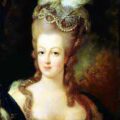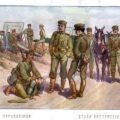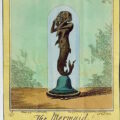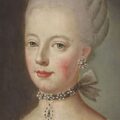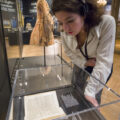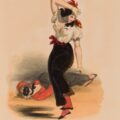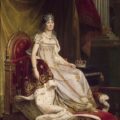Poldark The men – Part 3
May 2, 2015In Poldark The men, to continue my little series on the fashion of Poldark, I’ll finish by talking about the men’s clothing. I started by talking about Ross in uniform, and about men’s hats and wigs. So now a bit more about their outfits in general. In some ways it’s hard, since you’ll notice that each man wears almost exactly the same shape, just in different colours and fabrics – why, it seems they even got their boots from the same place!
In Poldark the men, the only difference overall is that Ross’s clothes tend to be on the streamlined side, while the peasants sport clothes that are on the dirty side. And the peasants are more keen on caps than hats.
So instead of going through, character by character, I will talk about the details of their outfits.
Poldark the men – shirts
For the nobility and peasantry alike, 18th Century shirts are loose and quite long, to mid thigh, as modeled by Demelza here, who is sleeping in one of Ross’s. Aah, there’s nothing like borrowing your boyfriend’s clothes. 18th Century men did not wear underpants, but simply wrapped this excess fabric between their legs and tucked it all beneath their breeches.
I can’t help imagining that with Ross’s tight trousers, this must feel a little like a nappy, but there you go. The shirt doesn’t button down the front, but would sometimes be have just one button or be laced at the neck.
Poldark the men – Cravats
The cravat is a separate strip of material. It is intended to be a detachable collar to keep your actual shirt collar clean.
Notice that mine-worker Mark and another of his friends has a blue one – it doesn’t show the dirt as much as a white one would, although these ones are pretty grubby. It’s something like the origins of the American expression “blue collar worker” – a blue collar is still worn by a manual labourer.
George Warleggan, being rich and a dandy, wears his blinding white, starched and wrapped high around his neck.
Poldark the men – waistcoats
The waistcoat is where a man gets to show off a little. Ross’s waistcoats are usually plain, but his uncle has a nice embroidered velvet one, George Warleggan’s is, of course, double breasted purple silk with brass buttons, and Francis has a figured brocade one.
Poldark buttons
Most buttons in Poldark are self-covered – that is, they are made from wood or bone covered in the same fabric as the garment itself.
Judd Paynter’s are of plain wood, presumably because Prudie’s just too lazy to cover them, and there are some brass button amongst, too. What most impresses me about the buttons on the Poldark men’s clothes is the sheer number required per garment – many many tiny ones on a waistcoat, lots and lots of small ones on a coat, and finally, plenty of larger ones on the topcoat.
Poldark Coats
Poldark coats come in two kinds – there’s the jacket, and then there’s the top coat. Ross’s top coat is in brown suede and although the practicality of that is questionable, it does flow behind him nicely when he strides along. Ross actually has a huge wardrobe for a man who is a tiny bit down on his luck; he has at least two of everything. So there is a nice blue version of the top coat too, as well as variations in colour of waistcoat and jacket. And of course, a black outfit for funerals.
Poldark breeches and boots
Breeches are worn fairly baggy to the knee and then tucked into your knee length boots. Unless you’re Ross, when they appear more like skinny jeans. Or George when you’re hosting a ball, when they are made of pretty silk, buttoned at the knee and worn with stockings and buckled shoes.
Poldark the men – Poldark colours
The colours of the men’s clothes on Poldark are quite restful and pleasing. Ross wears a carefully matched range of blues and greys, or alternatively browns. The actual dyes in the 18th Century were all natural, so indigo and other herbs would have been used, resulting in colours which are less bright than today. George Warleggan’s royal purple waistcoat would have been a very unusual and hugely luxurious colour at that time, as purple was hard to produce.
The Judge
Did you notice that the judge is dressed exactly the same as today’s judges? Judges don’t move with the times.



